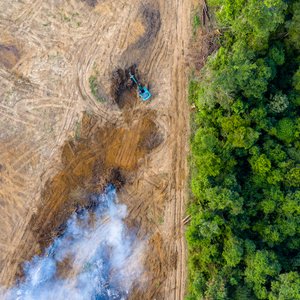An Aquafeed Com LLC report for the Western Pacific Regional Fishery Management Council
Prepared by Warren Dominy, Vernon Sato, Zhi Yong Ju and Mark Mitsuyasu
Executive Summary
In Hawaii the commercial fishing industry harvests various types of fish, of which tuna comprises approximately 60% of the total fish landings. Once the fish are processed, a residue, or fish processing waste (FPW), is generated and has to be disposed of properly. Some of this FPW is converted and sold as an organic soil amendment by the local rendering plant on Oahu, and farmers are composting some FPW and feeding it to pigs. However, much of the FPW is treated as garbage and trucked off to the land fill for disposal, especially on the outer islands. This disposal requirement is a huge cost burden for the fish processors, but it also ignores the fact that this FPW is a valuable raw material that could be turned into an income stream and become an important factor in contributing to the sustainability of Hawaii\'s food production.
Each of the Hawaiian Islands has its own unique set of circumstances: volume of FPW produced, ability of processors to handle and store the raw product, cost of FPW disposal and demand from community to utilize a stabilized fish feed ingredient or fertilizer. All island communities share the remote location of the Pacific Islands, which creates specific challenges and opportunities: the high cost of shipping imported good from the mainland states and foreign ports provides an opportunity for the same products to be developed on Island and to be competitively priced in the local market.
The current FPW generated in Hawaii, if maintained and processed properly, can meet or exceed the fishmeal market standards for the various fish meals and fish oils that are sold commercially today. Potential products from a FPW are: a dry, high quality fishmeal; fish silage; fish oil; and ground, fresh frozen fish blocks. These potential products could be added to feed formulations for pet foods, livestock and aquaculture feeds that could be manufactured locally. Or with the high demands and shortages of fishmeal and fish oils on the commodity markets, could be exported and sold to markets overseas. FPW that does not meet the quality and specification for a high quality fishmeal, fish oil, or fish silage could be converted into a liquid or dry fish fertilizer for use by farmers, to raise local terrestrial and aquatic plant crops.
FPW products that are developed on the islands avoid the high cost of shipping imported goods from the mainland and other foreign ports, and could be competitively sold locally to farmers and livestock producers, to support food security for the Islands. The effective recycling and utilization of FPW throughout the State would help create a more sustainable ecosystem-based management that the Western Pacific Regional Fisheries Management Council (WRPMC) envisions for the fisheries industry in the US Western Pacific Region.
This study is to determine the potential of obtaining better value and better use for Hawaii\'s FPW, using developed technology that will bring additional benefits to the fisherman, fish processors, FPW recyclers and the agricultural and aquaculture communities that could use the FPW co-products that are locally developed from the fishing Industry. This study will also provide a model for fish processing waste utilization for other Pacific Islands that face similar challenges in recycling and creatively utilizing their FPW.
The volume of FPW being generated by major islands and by the State from selected high volume seafood wholesalers and retailers has been estimated. Laboratory analysis of FPW samples taken over several years has determined its quality, nutrient content and value. The data has been analyzed, reviewed and compared with similar imported products on the market. Several viable options have been put forward for technology to recycle and utilize FPW on Island into eco-friendly co-products of fish processing, for use as a feed or fertilizer
fish-processing-waste-a-valuable-co-product-of-the-fishing-industry







